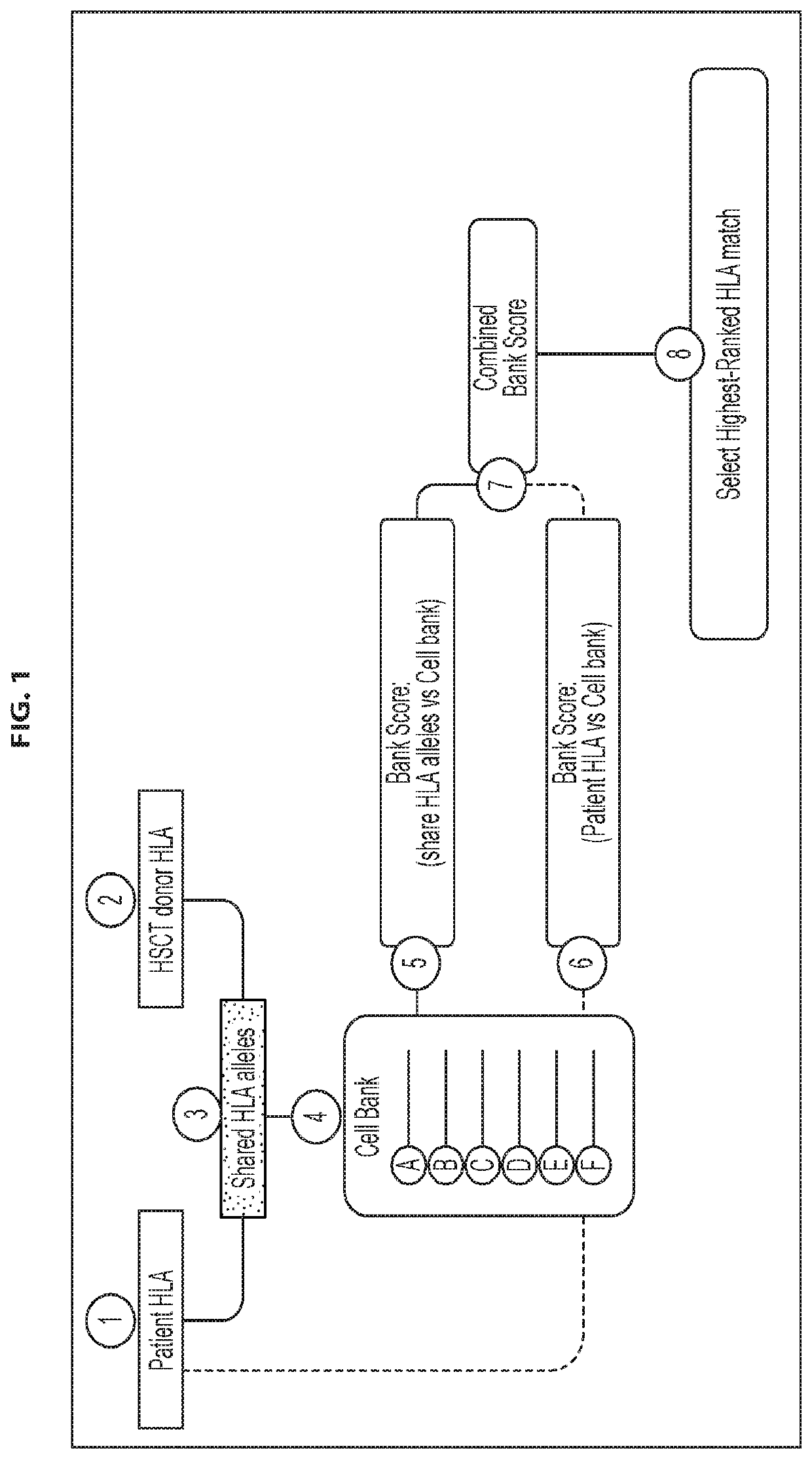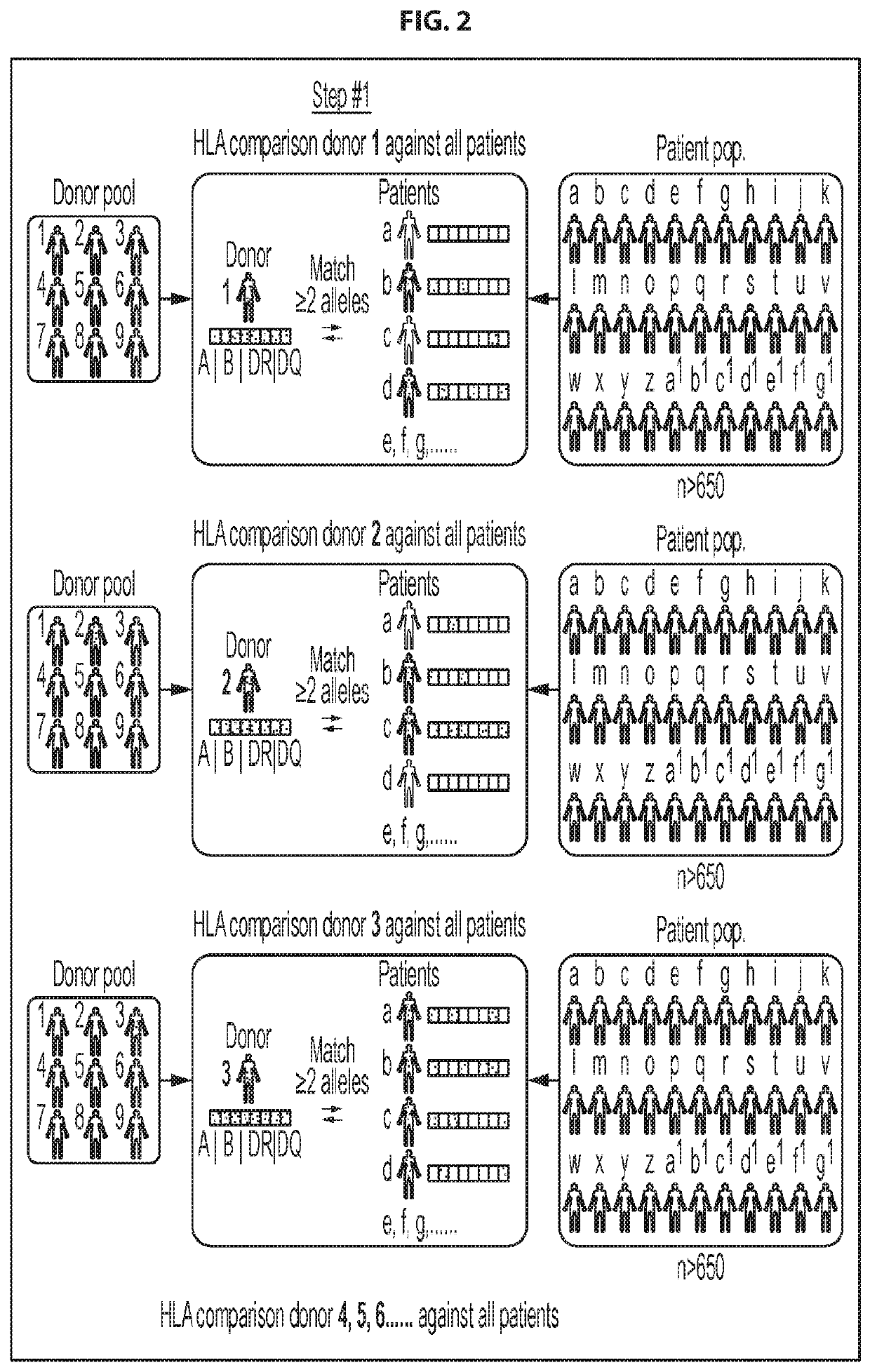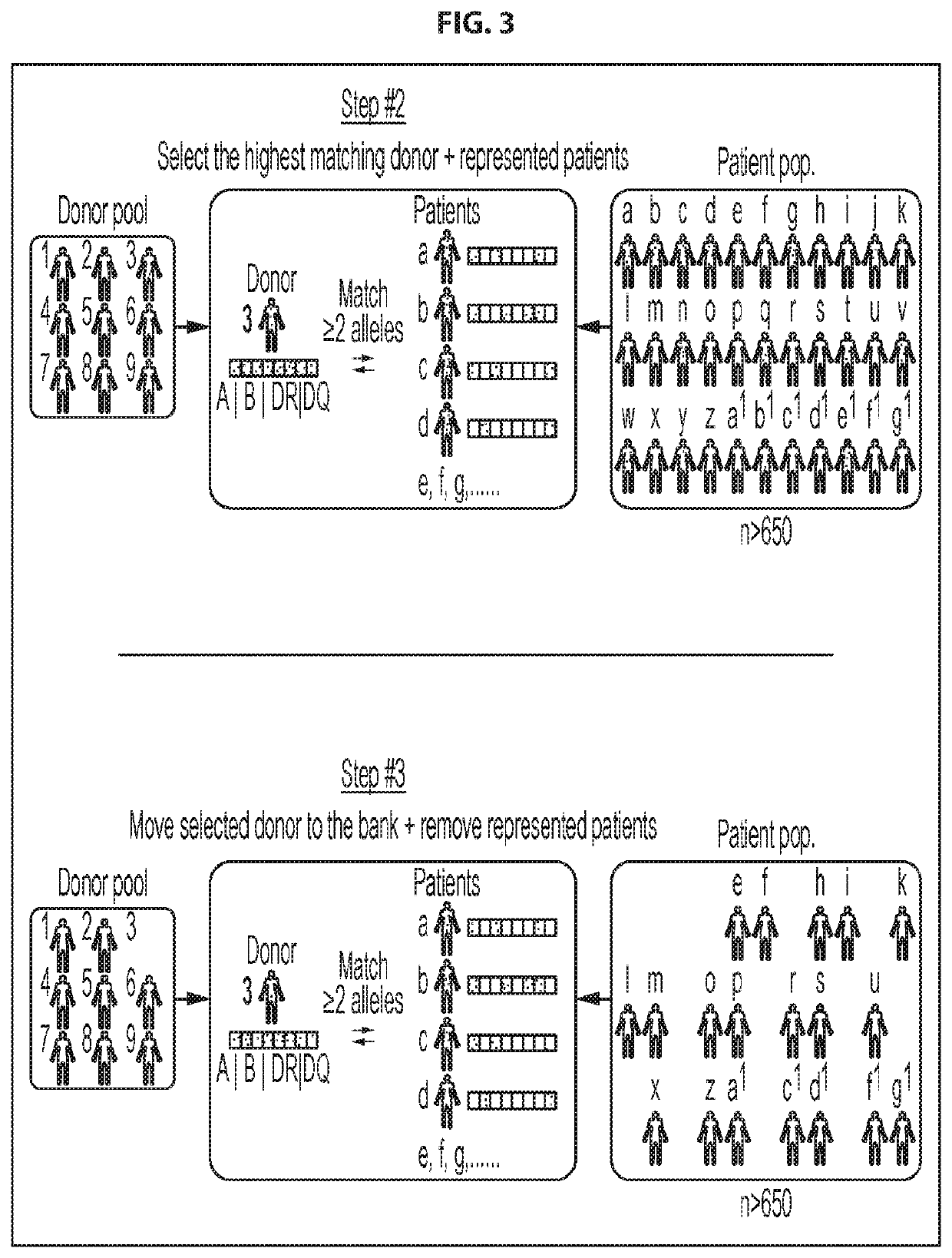Antigen-specific t cell banks and methods of making and using the same therapeutically
a technology of t cell banks and antigens, applied in the field of cell biology, molecular biology, immunology, medicine, can solve the problems of patients being vulnerable, relapse and viral infections remain major causes of morbidity and mortality, and antiviral drugs are not always effectiv
- Summary
- Abstract
- Description
- Claims
- Application Information
AI Technical Summary
Benefits of technology
Problems solved by technology
Method used
Image
Examples
example 1
Construction of a Donor Bank of CMV-Specific VST (CMVST)
[0252]Selection of donors for CMVST generation: To ensure that a clinically effective line could be provided for the majority of the allogeneic HSCT patient population, we developed a donor selection algorithm to choose the best possible donors from a given donor pool for producing cell therapy products for a given patient population. The HLA types of 666 allogeneic HSCT recipients treated in the Houston region (Houston Methodist or Texas Children's Hospital) were analyzed, which has a diverse ethnic make-up that is similar to the United States as a whole. These HSCT recipient HLAs were then compared with the HLA types of a pool of diverse, healthy, eligible CMV seropositive donors. In an initial step (FIG. 2, Step #1) the HLA type of each of the healthy donors in the general donor pool was individually compared with the HLA type of each of the patients in the patient pool, and the highest matching donor (also referred to herei...
example 2
Generation of Multivirus-Specific T Lymphocytes for the Prevention and Treatment of Respiratory Viral Infections
[0275]Our group has previously demonstrated that the adoptive transfer of in vitro expanded virus specific T cells (VSTs) can safely and effectively prevent and treat infections associated with both latent [Epstein-Barr virus (EBV), cytomegalovirus (CMV), BK virus (BKV), human herpesvirus 6 (HHV6) and lytic [adenovirus (AdV)] viruses in allogeneic HSCT recipients. Given that susceptibility to CARVs is associated with underlying cellular immune deficiency, in the current study we explored the feasibility of extending the therapeutic range of VST therapy to include Influenza, RSV, hMPV and PIV-3.
[0276]We described a mechanism by which a single preparation of polyclonal (CD4+ and CD8+) VSTs with specificity for 12 immunodominant antigens derived from our 4 target viruses can be rapidly generated using GMP-compliant manufacturing methodologies. The viral proteins used for stim...
example 3
Generation of Donor MiniBanks of Multivirus-Specific T Lymphocytes for the Prevention and Treatment of Infections Following allo-HSCT
[0312]In healthy individuals, T cell immunity defends against BKV and other viruses. In allo-HSCT recipients the use of potent immunosuppressive regimens (and subsequent associated immune compromise) leaves patients susceptible to severe viral infections. Therefore, our approach is to restore T cell immunity by the administration of ex vivo expanded, nongenetically modified, virus-specific T cells (VSTs) to control viral infections and eliminate symptoms for the period until the transplant patient's own immune system is restored. To achieve this goal we have prospectively manufactured VSTs from peripheral blood mononuclear cells (PBMCs) procured from healthy, pre-screened (for infectious agents and disease risk factors as mandated by 21 CFR Part 1271, subpart C), seropositive donors, which are available as a partially HLA-matched “off-the-shelf” produc...
PUM
| Property | Measurement | Unit |
|---|---|---|
| Fraction | aaaaa | aaaaa |
| Fraction | aaaaa | aaaaa |
| Fraction | aaaaa | aaaaa |
Abstract
Description
Claims
Application Information
 Login to View More
Login to View More - R&D
- Intellectual Property
- Life Sciences
- Materials
- Tech Scout
- Unparalleled Data Quality
- Higher Quality Content
- 60% Fewer Hallucinations
Browse by: Latest US Patents, China's latest patents, Technical Efficacy Thesaurus, Application Domain, Technology Topic, Popular Technical Reports.
© 2025 PatSnap. All rights reserved.Legal|Privacy policy|Modern Slavery Act Transparency Statement|Sitemap|About US| Contact US: help@patsnap.com



